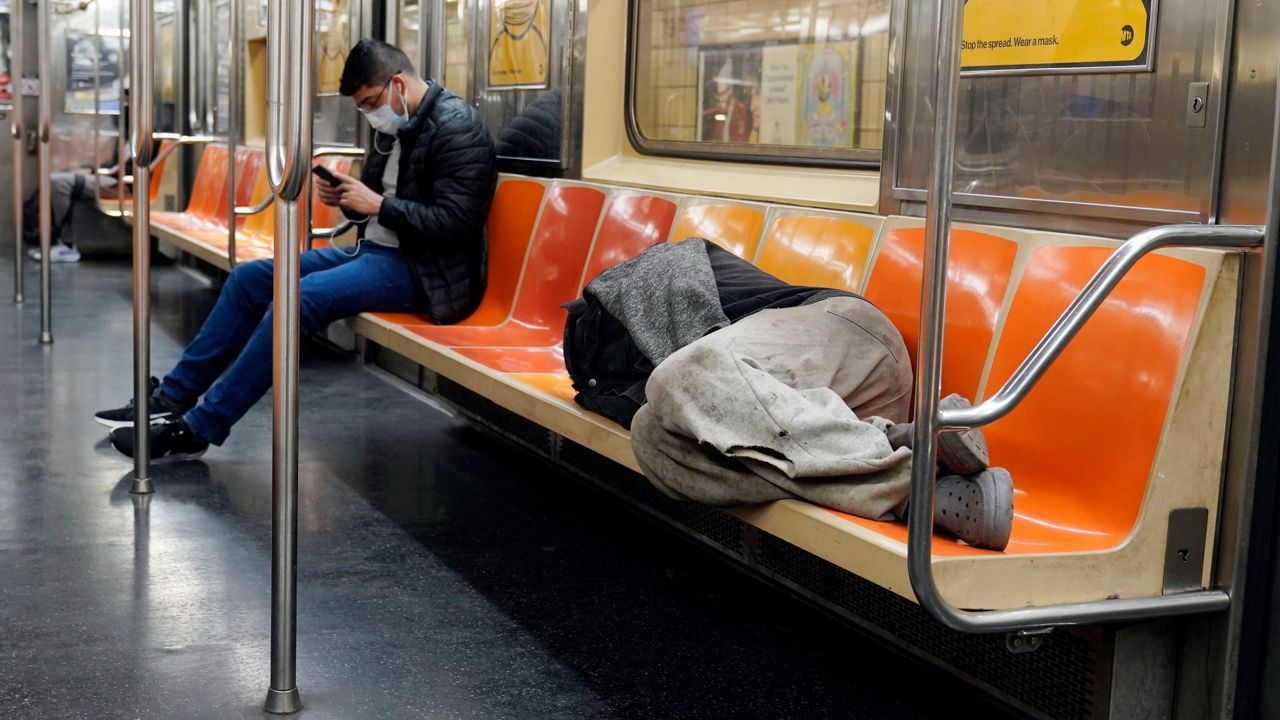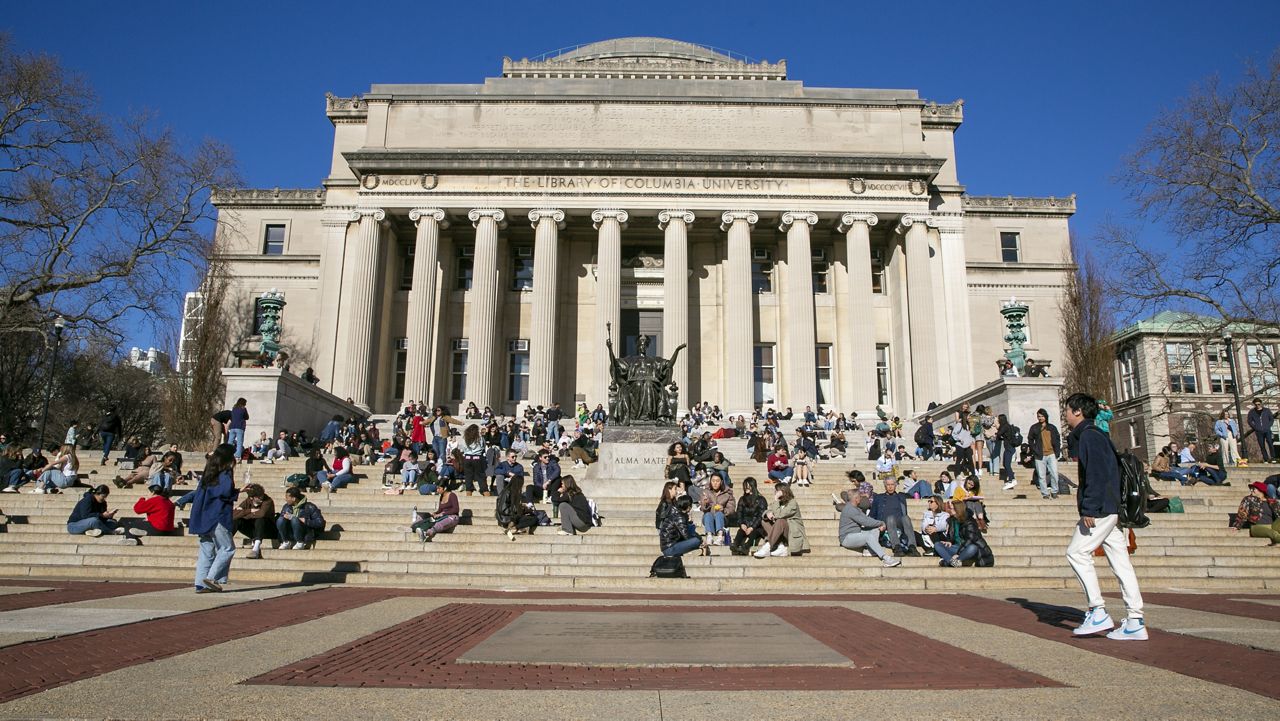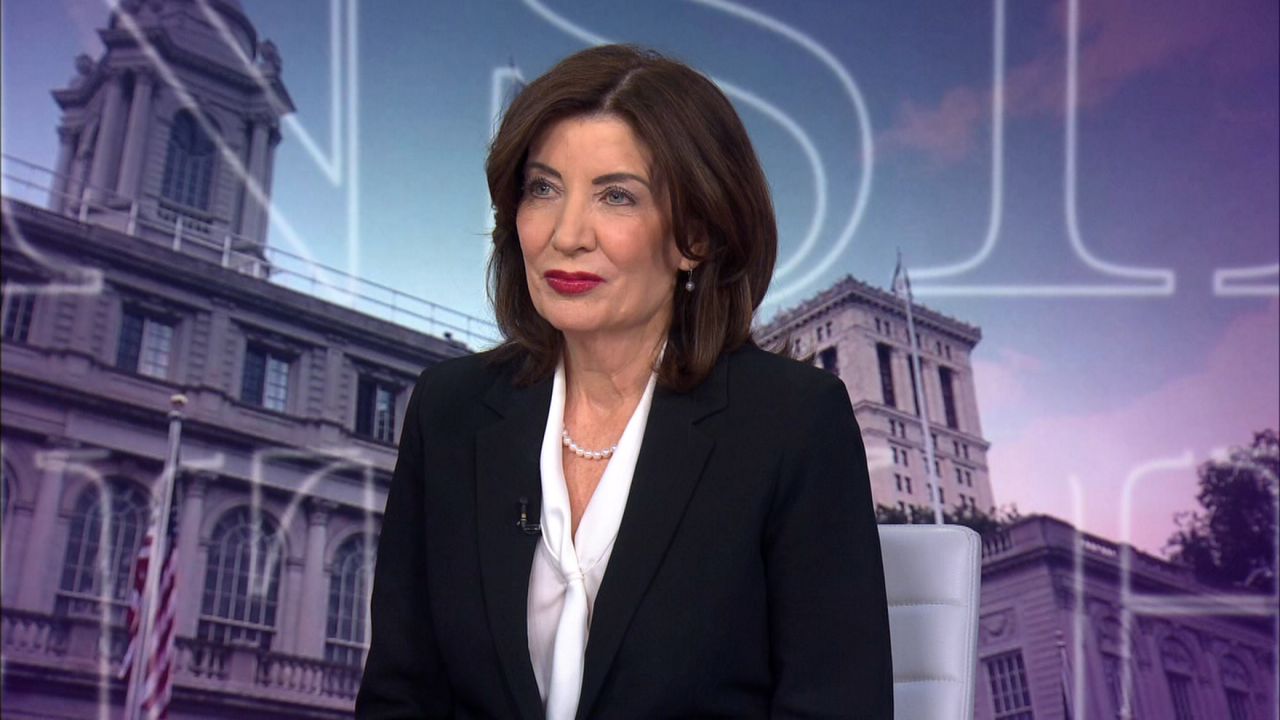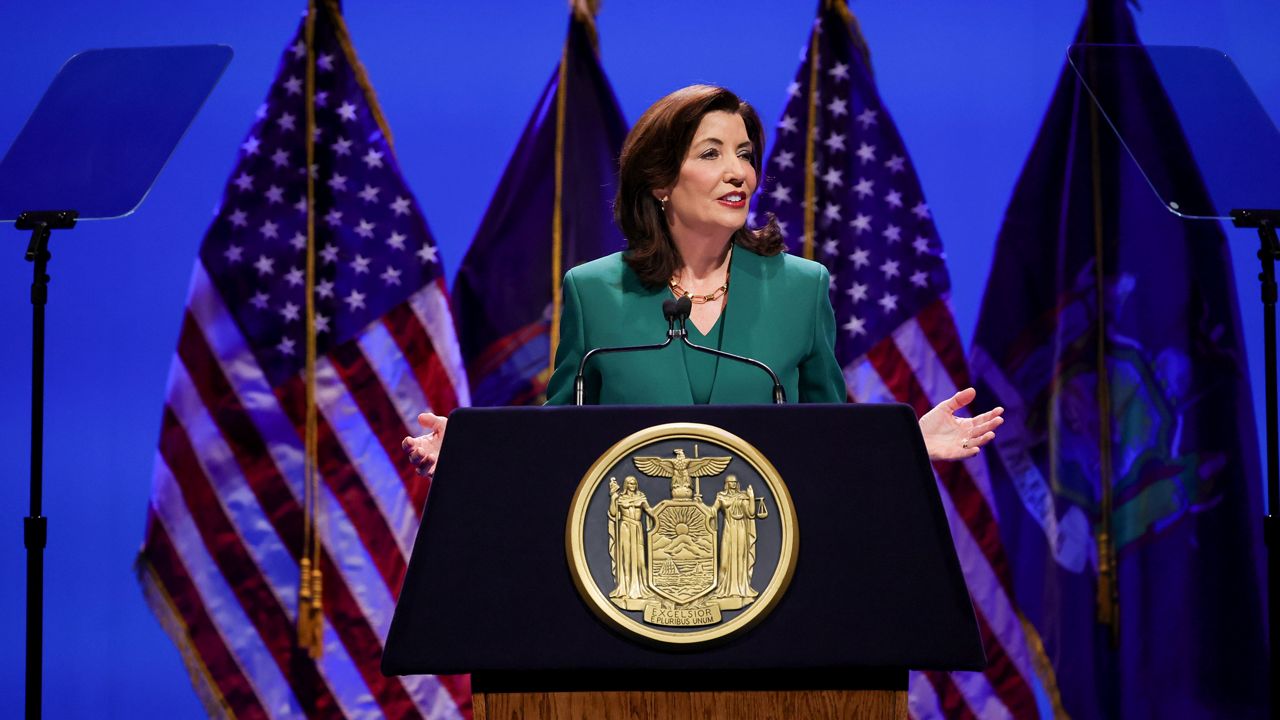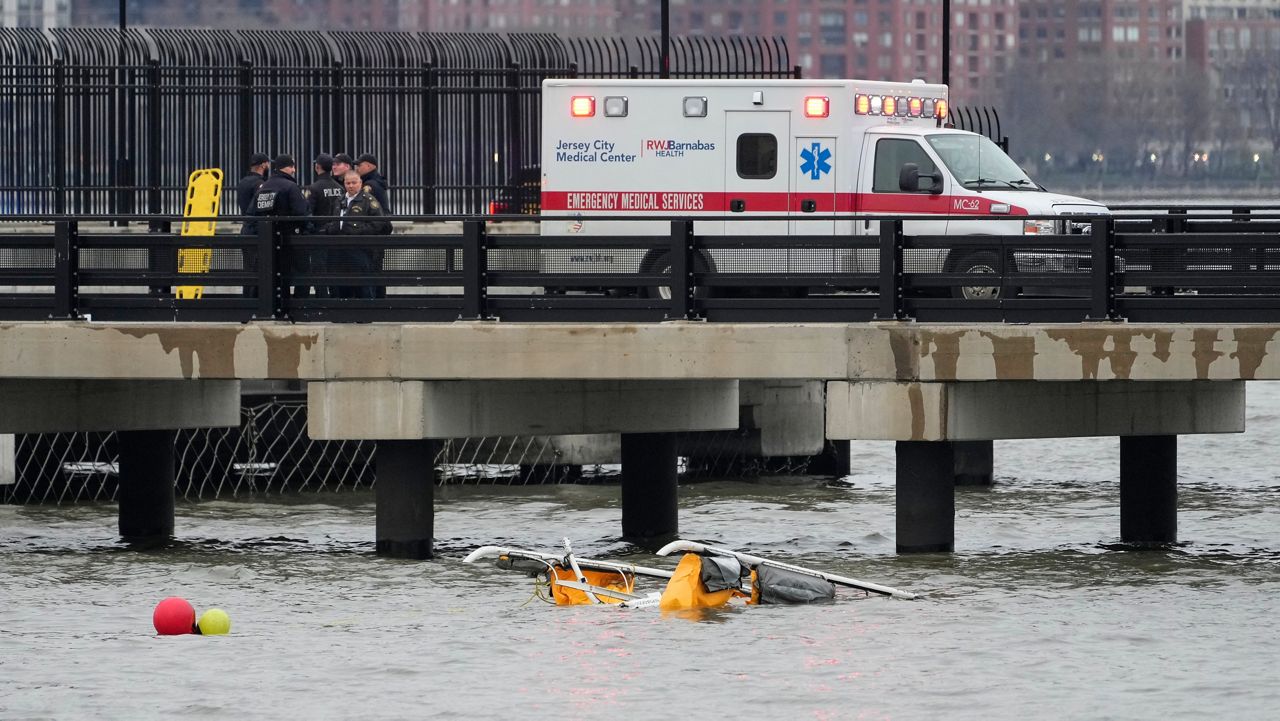Teams of NYPD officers, clinicians, and community-based providers will begin canvasing the subway system next week as part of Mayor Eric Adams and Gov. Kathy Hochul’s plan to reduce the number of homeless individuals in the subway system.
The “Subway Safety Plan" calls for deploying up to 30 joint response teams that bring together the Department of Homeless Services, the Department of Health and Mental Hygiene, law enforcement and community-based providers. The teams will focus on high-need locations across the system, including end-of-line stations.
"You can't put a Band-Aid on a cancerous sore," Adams said at the Fulton Street subway station in Manhattan, where the news conference was held. "That is not how you solve the problem. You must remove the cancer and start the healing process."
The mayor and governor said officers will be enforcing the MTA's code of conduct, which prohibits lying down on seats, spitting and smoking.
It comes after a recent string of subway attacks, including the death of Michelle Go, who was pushed in front of a train last month at the Times Square subway station. The man arrested for the crime has a history of mental illness.
The mayor called the subway system “the lifeblood of our city."
“If they’re not safe, if people don't feel safe, and if the numbers of crime are not reflective of who and what we want to be as a city, it's going to impact us,” Adams said.
He pointed to the increase in homeless individuals due to the COVID-19 pandemic as a reason for the uptick in crime, although he made clear that “the vast majority are not dangerous.”
He went on to say: “But we have to be honest about the numbers of individuals who are dealing with mental health crises. They are dangerous to themselves and dangerous to New Yorkers.”
The teams’ mission is to reach out to homeless New Yorkers inside the subway system, including in stairwells, on platforms and within subway entrances, and to connect them with immediate care, he said. They will also follow up with housing and other support services.
Advocacy groups, however, argue that the increased outreach-based policing strategy further stigmatizes homeless individuals.
"It is sickening to hear Mayor Adams liken unsheltered homeless people to a cancer," Shelly Nortz, deputy executive director for policy at Coalition for the Homeless, said in a statement. "They are human beings. The mayor's own police department recently noted that those who shelter in the transit system are there because they believe they have no safer alternative. Criminalizing homelessness and mental illness is not the answer."
Last month, the mayor and governor announced the first part of the plan, which involves putting additional police officers inside subway stations to patrol.
Since then, there have been 115,000 police inspections in addition to the work of transit officers, according to officials.
“But we’re saying that is not enough,” the mayor said. “It was only the first wave of a complex problem that we are facing.”
“This may seem like a problem which is too tough to tackle, but I do believe, as the mayor does, we have assembled the best and the brightest—the most committed public servants—to come to solve this,” Hochul said.
She said the state is raising Medicaid reimbursement by 10% to increase the number of psychiatric beds available at hospitals. Her office is also requesting matching federal funds to bring the total increase to 20%, she said.
There are currently 1,000 psychiatric beds available statewide with 600 of those beds in New York City, according to the governor.
She also announced an investment of $27.5 million for psychiatric beds statewide and $12 million for 500 supportive housing beds.
The governor also referenced the $10 billion plan to increase the health care workforce.
“You can have all the beds you want, but if they’re not staffed by professionals, it serves no purpose and we have a shortage of health care workers,” the governor said.
Nortz said the emphasis on making psychiatric beds more accessible and the additional funding for other supportive services is a step in the right direction.
"But we need so much more, including ready access to voluntary inpatient and outpatient psychiatric care including medication, individual hotel rooms for unsheltered individuals, and at least 1,000 immediate low-barrier subsidized permanent housing placements paired with mobile mental health teams," Nortz said the statement.
The joint response teams will begin canvasing next week in what the city considers “high priority areas” including the A, E, 1, 2, N and R lines, officials said.




